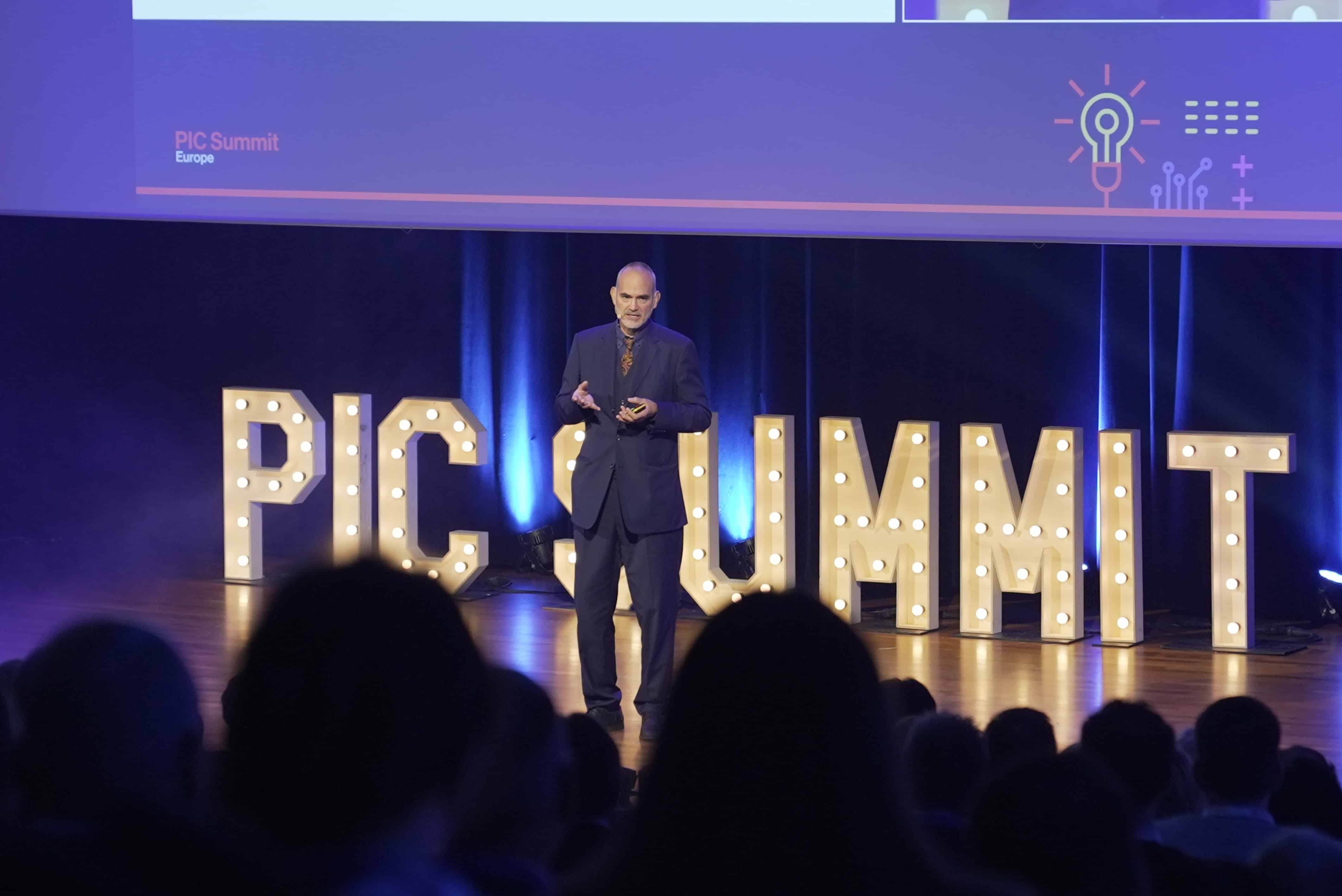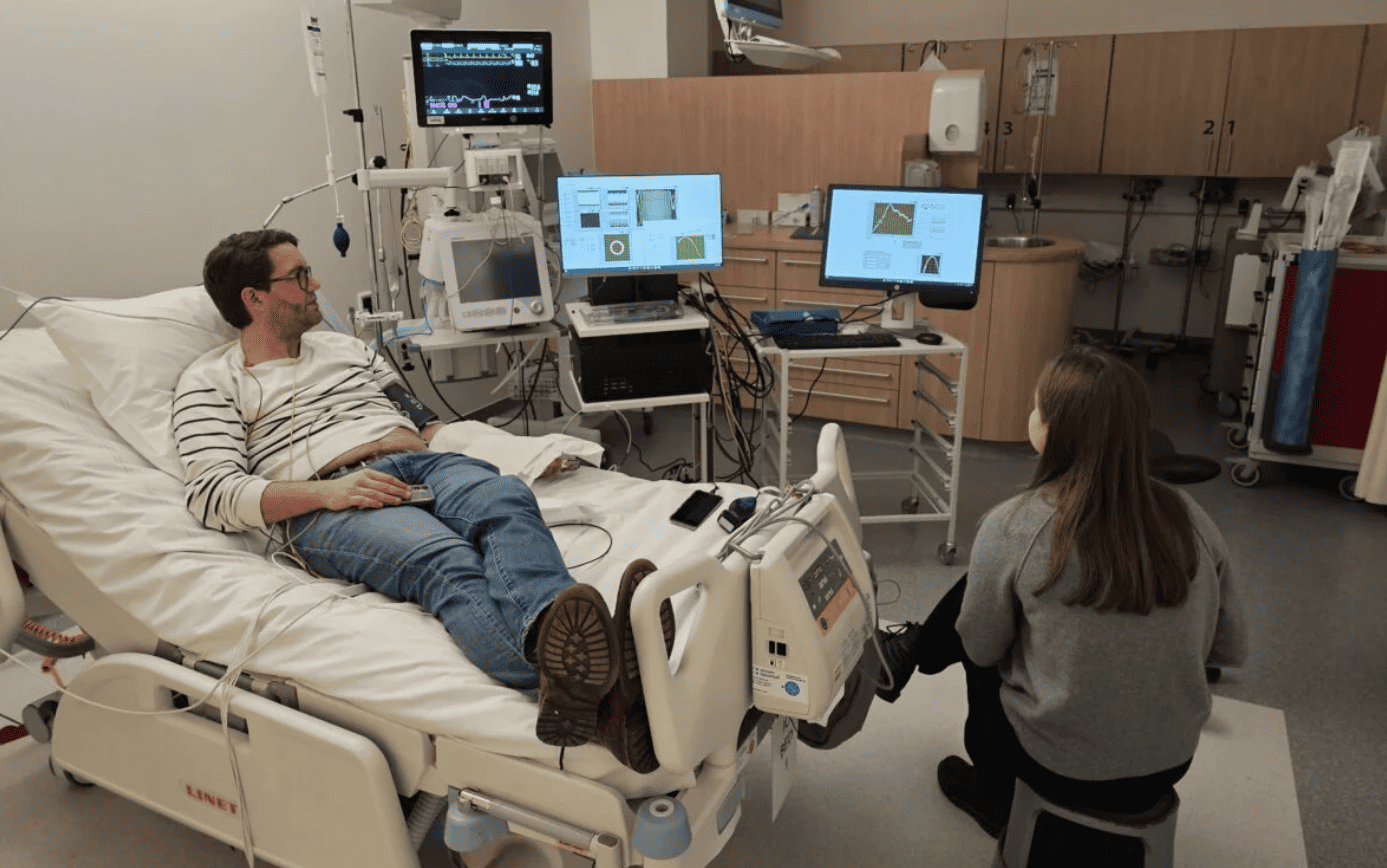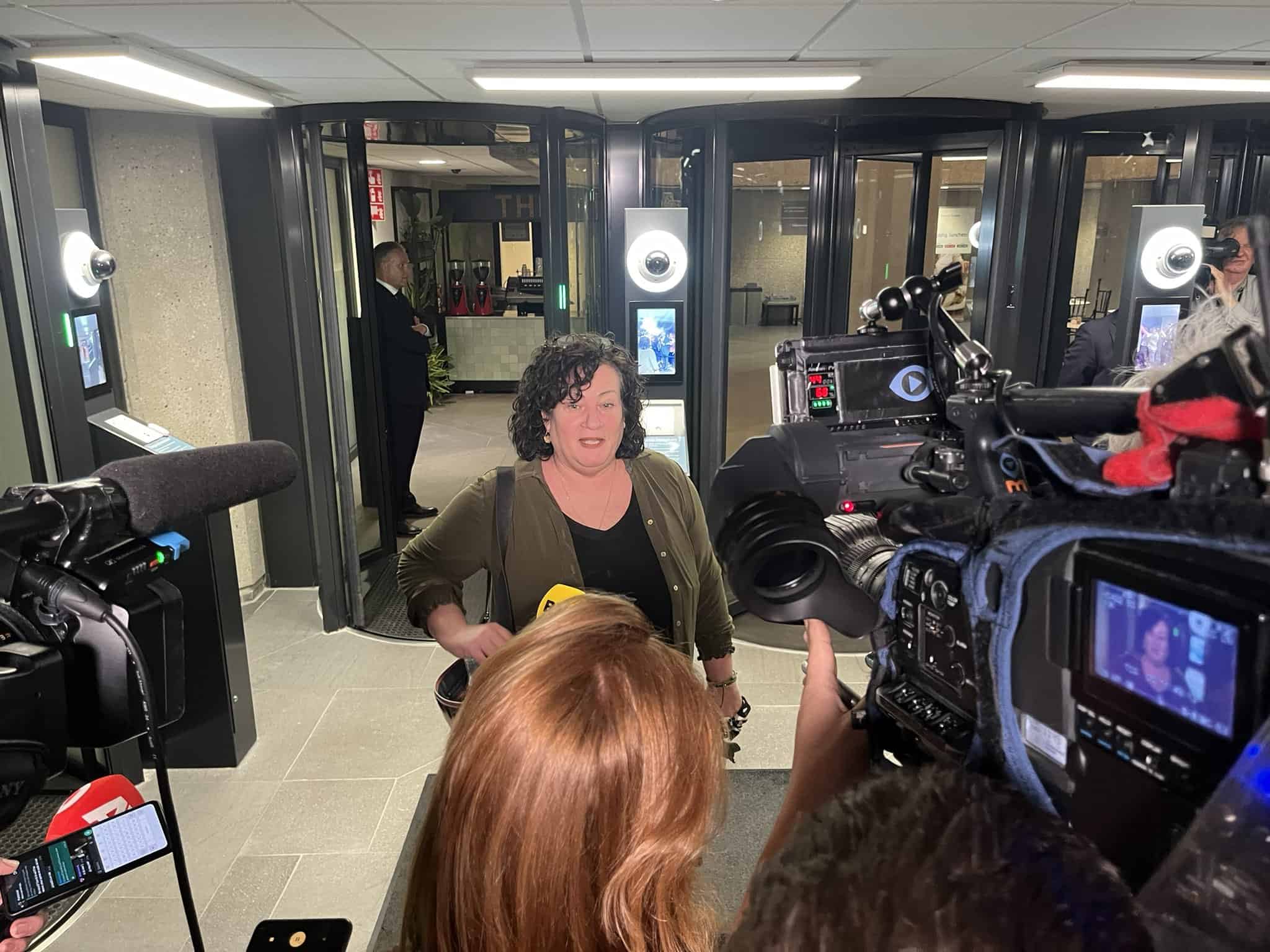
PhotonDelta is an EU-wide initiative with a strong Dutch accent. The clear goal is to accelerate the wider use of photonic technologies across Europe between now and 2030. That will require volume manufacture of products for this continent to remain a global player in an era of Zettabyte communications and 50 billion IoT devices.
Last month, PhotonDelta MD Ewit Roos presented the latest findings at the Novio Tech Campus in Nijmegen. He explained the Netherlands international position in photonics and described the opportunities for a Dutch national photonics agenda.
The main news about Novio Tech Campus Day here: “More Speed in Photonics Agenda“
“We plan to maintain and grow Europe’s lead on the rest of the world by connecting and amplifying existing initiatives as well as kick-starting new ones” explains Ewit. “So, we operate as a catalyst to connect scalable initiatives with relevant research and industry organisations as well as various government initiatives.”
With the chip industry based around NXP in Nijmegen and the pioneering R & D work going on in the technical universities in Eindhoven and Twente, high-tech means a lot to several local economies. By enhancing and stimulating cooperation, the provinces want to increase their market share.
“We need to do three things: Expand research, increase investment, and cooperate more at a European level to avoid expensive duplication of effort. We estimate that over the next decade around € 500 million will be needed from both government and industry to grow the knowledge base in the Netherlands and maintain a leading position in the photonics- industry. Let me explain why that is needed”.
“The goal is to combine the entrepreneurial spirit of young companies with the wisdom of large enterprise. Our efforts are designed to complement efforts that are already being made, as well as tapping into new funding and research resources that have not yet been explored. Because no-one wants another layer of bureaucracy!”
The end of Moore’s Law is approaching
“In June 2017 PhotonDelta organised the World Technology Mapping Forum together with AIM Photonics Academy based at MIT in Boston. Over 170 scientists, researchers, government representatives and high-tech industry experts concluded that the demand for photonics components and technology is growing exponentially in sectors such as telecom and life sciences. As we reach the economic end of “Moore’s Law”, particles of light (photons) rather than electrons will be the engine driving many break-through applications.
However, many photonics companies are currently facing challenges when scaling beyond the low-volume production of Photonic Integrated Circuits (PICs). Work needs to be done to improve production yield and reliability of these chips, as well as define standards around packaging modules (i.e. connecting the photonics chips to the outside world). We’ve formed a steering group within PhotonDelta to help identify and tackle these challenges and demonstrate global leadership in integrated photonics systems.
It is important to realise that 80% of EU photonics sector is made up of innovative Small and Medium-sized enterprises. In the last year, several have been reaching out to PhotonDelta to help them scale into global businesses. So, we are busy connecting and coordinating initiatives to help them do that faster. Let me also stress that our efforts are designed to complement efforts that are already being made, as well as tapping into new funding and research resources that have not yet been explored. No-one wants another layer of bureaucracy!”
Product Cycles – The Cradle to grave is now 5 years
“Product-life-cycles in high-tech are so short now, there often is not the time to transfer a process or a product to another fab. A typical product development lifecycle is 18 months. That product will probably be viable in the market for just 3 years after launch. What used to be a product with a lifetime of 20 years has now been reduced to that of a commodity. Since it is the use of the technology which defines success, we need to identify bottlenecks and find much faster roads to market.
There is world-class innovation being done by several companies and research centres primarily in the Eastern and Southern provinces in the Netherlands. It’s fair to say that we’ve achieved a leading position in optics, photonic integration, and nanotechnologies. But to maintain a significant global impact, in what is traditionally a dispersed and fragmented sector, we need to stimulate trusted collaboration. Our report on how to achieve this was commissioned by the Netherlands Ministry of Economic Affairs & Climate Policy with strong backing from the vice-governors from provinces of North-Brabant, Overijssel, and Gelderland.”
Excellent Dutch Track Record must not erode
“The Netherlands is fortunate to have built a very strong track record in all 6 of the EC defined key enabling technologies (KETs); micro and nanoelectronics, nanotechnology, industrial biotechnology, advanced materials, photonics, and advanced manufacturing technologies. However, there is a growing risk of this knowledge dispersing outside the EU, thereby weakening Dutch Industry. There are already examples of foreign manufacturers cherry-picking their research and development needs in Europe but scaling-up production elsewhere. To make the proposed foundries and other related services succeed, they MUST be globally competitive in terms of the technology being offered, the yield and the economic viability of that technology.
There are already products on the world market from Dutch photonics companies. However, for the moment, they can only be produced in relatively small volumes and against relatively high costs. So, although the technology is advanced, the industrial process to manufacture in quantity is still in its infancy. This applies not only to the production process itself – where continuous improvement is required – but also for the packaging and assembly. Automation, standardization, generic design and processing are the relevant “buzz words” so as to bring costs down and scale up the capacity across the entire supply chain.
Over the last 5 years, we have observed the explosion in the growth of Indium Phosphide photonics in datacentres and next generation (5G) mobile networks. But we also see significant growth in the use of photonics for other applications, such as in aerospace, agri-tech, metrology and biomedical sensing. PhotonDelta recognizes that it is important that we include technologies such as TriPlex and SiN/InP hybrid’s in the portfolio of European fabrication capabilities.
We believe we’re now moving into an era of trusted collaboration. Independent studies like the 2017 World Economic Forum Global Competitiveness report show that The Netherlands is the leader within the EU when it comes to applying technologies to the 4th industrial revolution. Collaboration between industry, universities, and government (especially in Eindhoven, Nijmegen and Enschede) has improved considerably in the last five years and the quality of Dutch research institutes is world class.”
PhotonDelta is a Catalyst
“We’re now reaching out to non-photonics companies who, we believe, may benefit from some form of integrated photonics or have already approached us for assistance in scaling their business. The PITC will be managed by a strong core-team with deep-domain knowledge and will operate as a separate independent legal entity. The goal is to combine the entrepreneurial spirit of young companies with the wisdom of large enterprise”.
Standing on the shoulders of giants
“We’ve started by mapping what is already out there. Early in 2017, PhotonDelta commissioned a global study of the Integrated Photonics ecosystem. We’re now combining this extensive market research with insights gained from the recent World Technology Mapping Forum back in June. We also acknowledge the input from photonics colleagues in Canada, Singapore, Taiwan, France, Germany, Sweden, Switzerland, Finland, USA, Spain, Poland, and Italy. Many have shared their strategies which will benefit from cross-border collaboration. We are currently leading the discussion to form a European Photonics Alliance, which will encourage active cross-border collaboration between 20+ photonics-related digital innovation hubs. We have also closely supported the work of ACTPHAST 4.0, a Brussels based Europe-wide initiative to support innovation in companies during their pre-competitive phase.”
What happens next?
“Three Dutch provinces have already agreed to strengthen their collaboration in photonics. In the recently released national government agreement, the Dutch coalition partners recognize photonics as a key enabling technology impacting other important sectors in society. Everything is now in place to build a coherent national plan to take the photonics sector to the next level. In fact, photonics ticks all the boxes with contributions to policies on energy-transition as well as safer food and agriculture.
A photonics agenda is a sound basis to apply for investments. Both provinces and the Ministry acknowledge that a Photonic Integration Technology Center (PITC) is required to boost the ‘’market readiness’ of the technology and accelerate time to market. To succeed, the PITC must be a business-driven operation, providing agile responses to market demand. We now working on detailed plans to show the kind of infrastructure that is needed to facilitate technology development in both production (back-end and front-end) as well as applications.
We expect to roll out the details in the first quarter of 2018 and apply for relevant funding before the summer. Parallel to this, the EU partners in European Investment Bank and the DG’s (Growth, Region and Connect) are involved respectively for funding (EIB), Pilot Line (Growth), Regions (Smart Specialisation, connection to other regions, EU supply chain investments) and Connect (Various calls). All this is being done with the full backing of the three Dutch high-tech provinces.”
Vice-governors of the respective provinces Bert Pauli (Brabant), Eddy van Hijum (Overijssel) and Michiel Scheffer (Gelderland) have already made a strong commitment to the European photonics industry: “Europe’s fourth industrial Revolution begins in the region where researchers and entrepreneurs collaborate productively on innovation. Photonics is a smart and clean industry. There is a strong sense of urgency to move to the next phase. We have a head start, but we need to remember that other countries are not far behind.”
Photo (c) Jonathan Marks








